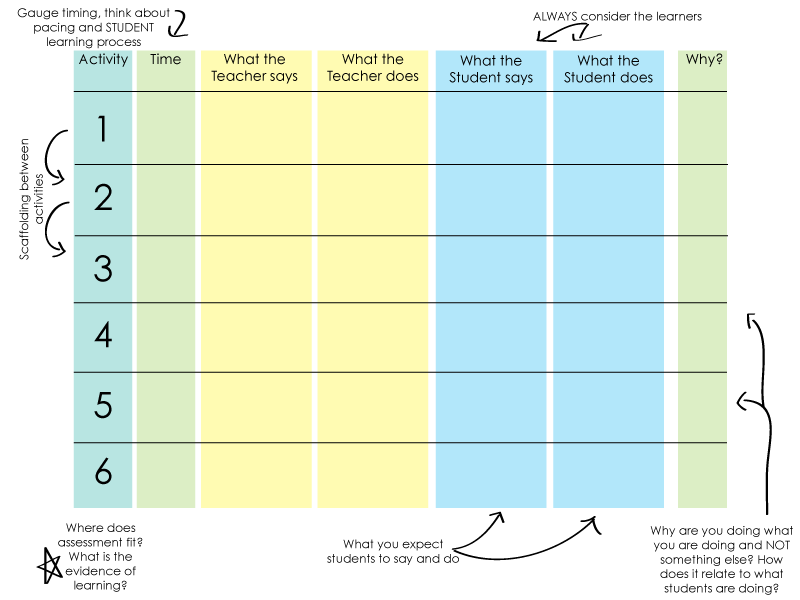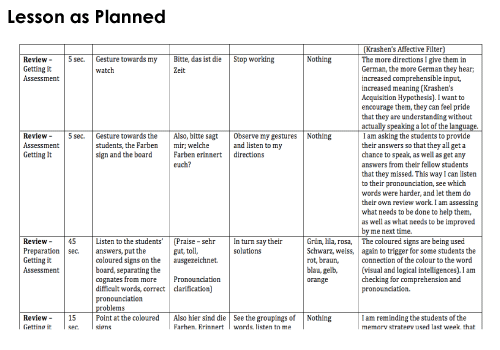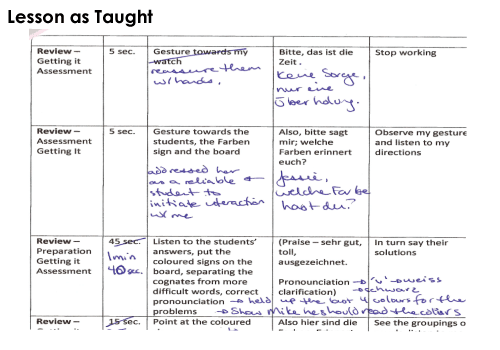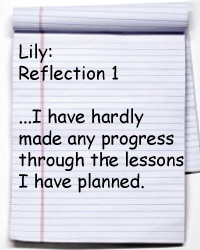 Lesson Planning in the Language Classroom
Lesson Planning in the Language Classroom
How can beginner teachers best prepare themselves for the complex task of planning? Is planning in the language classroom different from that in other classrooms? What might be different? In this section we will discuss the importance of planning and explore some strategies that can be used when lesson planning. |
Why is it important to plan?
Research has shown that student learning is correlated to teacher planning. Why do you think this might be the case? One major explanation is that when a plan is ready, teachers can focus on its implementation. When teachers do not have to think so much about what they need to do next, they are able to focus on other parts of the lesson. This is especially important in SL/FL teaching where a teacher not only has to concentrate on the content being taught and learner needs but also on the use of the second language as well. This concept relates to the idea of cognitive capacity and cognitive load. In short, when a plan is prepared the teachers cognitive load is less and they can pay more attention to other aspects of the learning process. For more information on Cognitive Capacity and Load click here.
 |
It is said that teachers make over 200 decisions a minute. What might some of these decisions be? |
How should I structure my lessons?
The structure of a lesson will not be exactly the same every time you plan but instead will vary according to multiple factors. These factors include:
- The age and ability of the students
- The time of day
- The duration of the class
- The gender distribution in the class
- The class or group interest in the subject
- Where the lesson falls in the larger unit
Although the structure will be influenced by these various factors, there is one thing that can be done in every case- developing a ROUTINE. By creating a routine, the students know what to expect and therefore feel safer in the class. This is especially important in the SL/FL classroom where students need to feel comfortable taking risks and making mistakes. A typical routine may look like the following:
- Transition into the TL. Greetings, agenda of the day’s activities, a “do now” and/or informal chat
- Learning Time. Instruction, activities, exercises, work time, etc.
- Homework summary. Discussion of the day’s work and any homework or upcoming projects.
- Closure and farewell.
Once a routine is established, lesson plans can be more easily developed for each day. This is where more detail may come in useful, especially for beginning teachers.
 |
In your opinion what should be included in a lesson plan? |
The more experienced a teacher becomes, the less they may need to include in a lesson plan. What may take a beginner teacher 2 pages to explain might be covered in a post-it note for an experienced teacher. Although time consuming, it is important for beginner teachers use detail in their lessons as it can help to see the lesson in its entirety. Details might include:
- What is being taught & how it will be presented (Giving It)
- What the students will be doing (Getting it & Using it)
- How the lesson meets the broader goal (Planning Backwards)
- How activities will be chosen and sequences to help support learning (Scaffolding)
 |
Watch the presentations below to find out more about Lesson Planning from Dr. B! (Video 1: 7:47; Video 2: 9:45) |
What might a detailed lesson plan look like?
Learning to plan is just like learning any other skill- it takes time and practice. At first, lesson planning may seem like a time-consuming process but by creating detailed lesson plans as a beginner teacher one is able to develop routines that can become more automatic over time. When first learning how to plan it is important to be as detailed as possible. Let’s look at the anatomy of a detailed lesson plan.

Another step in learning to plan is reflecting on what worked and what did not. One way in which this can be done is through a comparison of a Lesson as Planned (LAP) and a Lesson as Taught (LAT). Let's look at an example.
 |
|
 |

1. What types of changes did this teacher make during the lesson?
2. Look at the predicted and actual timing; what types of activities took longer than expected/shorter than expected?









 Many of our teacher friends refer to lesson planning in their reflections, and each offers a unique reaction to the process of lesson planning. Jin, for instance, has observed that his teacher is able to move effortlessly through his lesson with natural transitions and no sign of a lesson plan. Lily expresses that although she has done her planning, she does not seem to be making progress due to classroom disruptions. Planning is a complex yet essential part of the teaching process that changes over time as teachers gain more hands-on experience..
Many of our teacher friends refer to lesson planning in their reflections, and each offers a unique reaction to the process of lesson planning. Jin, for instance, has observed that his teacher is able to move effortlessly through his lesson with natural transitions and no sign of a lesson plan. Lily expresses that although she has done her planning, she does not seem to be making progress due to classroom disruptions. Planning is a complex yet essential part of the teaching process that changes over time as teachers gain more hands-on experience.. 
